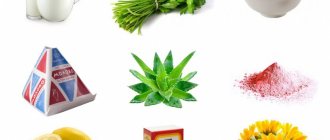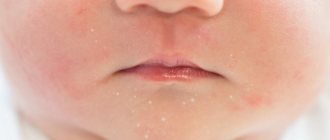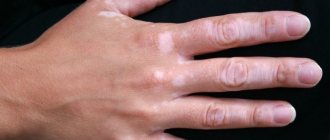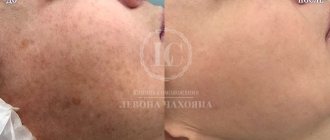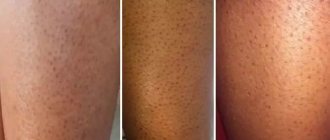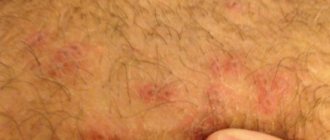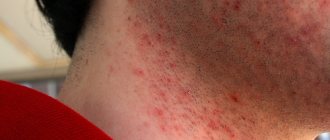Causes of painful neoplasm
Calluses occur in areas that have been exposed to friction for a long time. If thickening of the skin on the feet or hands is usually associated with a certain type of activity (heavy physical labor or sports), then on the little toe they appear mainly due to wearing tight, uncomfortable shoes.
Note! If a person has sensitive skin that easily develops calluses, he should refrain from buying hard shoes.
Associated factors are:
- overweight;
- standing on your feet for a long time;
- flat feet;
- increased sweating.
People with fungal diseases and excessive dry skin are also prone to the formation of calluses.
What is the danger of a callus on the thumb?
When calluses form, nothing destroys a person’s life, but there is a high risk of infection if the callus is in the form of dropsy.
As a result of damage to the bladder, a wound is formed and, if measures are not taken to prevent the penetration of pathogenic microflora into it, infection can occur.
The formation of growths often prevents a person from walking normally.
When the foot is compressed by shoes, pain appears.
The presence of corns and fresh calluses provoke a burning sensation and pain when walking.
Treatment of such growths should begin immediately after they appear.
Kinds
There are several types of calluses that can appear on the little finger. They all differ in appearance and symptoms, and also require specific treatment and prevention.
Dry
This thickening of the skin does not cause pain when pressed. The callus is round, hard to the touch and yellowish in color. It typically appears on the palms and fingers, heels, or the skin around the balls of the feet. But, if a person constantly wears narrow shoes, walks or stands a lot, a callus may appear on the outside of the little toe.
Wet
One of the most common types of neoplasms that can form on any area of the skin.
Reference! In the case of the little toe, a wet callus appears due to walking in tight and uncomfortable shoes.
Externally, such a callus is a bubble filled with cloudy liquid. As long as the protective bubble does not burst, there is no danger to health. But when the liquid leaks out, the neoplasm loses its protective functions.
A wound forms at the site of the blister. It must be treated and sealed with adhesive tape. Otherwise, the wound may become infected. Naturally, you should avoid wearing shoes that caused the formation of calluses.
Core (ingrown)
This is a very insidious type of dry callus. It is also called ingrown due to the hard shaft. It goes into the deep layers of the skin and causes serious discomfort and even pain when walking.
Such a seal must be shown to a doctor. Self-medication is not recommended, since calluses are often confused with warts, and treatment for these pathologies is different.
Corns
It is these hard neoplasms of the upper layers of the epidermis that are most often observed on the lateral side of the little finger. Externally, a corn is a round area of thickened skin . The edges are a normal shade and the hard center is gray.
In most cases, the cause of corns is improperly selected shoes. It should not be too narrow (so that the toes do not rub against the edges and do not squeeze the toes), nor too wide (constant sliding of the foot leads to thickening of the skin).
Bone
A distinctive feature is that such a callus is formed not on the skin, but on the bone due to improperly healed fractures or wearing very uncomfortable shoes.
Most often, callus forms on the heel , but in some cases it can also appear on the little toe. If the problem is not corrected in time, the tumor will cause severe pain when walking.
Symptoms of callus
To understand that a patient is developing a callus, it is necessary to undergo an X-ray examination.
Symptoms that indicate the appearance of a callus include:
- Pain that is concentrated in the area of the injury at the stage of bone fusion.
- Hyperemia of the skin, swelling.
- Local increase in body temperature.
- The body can trigger a protective mechanism and the person will develop osteoporosis.
- Suppuration may occur in the area of the fracture.
If a patient experiences such symptoms, then the process of bone tissue restoration is disrupted. In this case, he must be provided with emergency medical care.
Diagnosis and treatment
It is not recommended to independently treat calluses on the little finger . Despite the fact that most tumors do appear due to uncomfortable shoes, it is better to consult a doctor to rule out other pathological factors.
Diagnostics is carried out in several stages:
- Taking an anamnesis: the doctor asks the patient how long ago the callus appeared, what lifestyle the patient leads, and what additional symptoms are observed.
- Initial examination: the doctor determines the general condition of the skin, determines the type of callus and the degree of its pain.
- Additional examinations: if there is a need to determine the presence of infection, a scraping is taken from the callus. To determine the fungus, a Wood's lamp is used, and general tests are prescribed to exclude hidden pathologies.
How to remove it from pharmaceutical products?
Based on the data obtained, treatment is prescribed to the patient. Therapy depends on the type of tumor and its neglect.
- To remove dry calluses or corns, place the foot in warm water for 10 minutes. The rough skin is carefully removed with a pumice stone or a foot file. Then apply a cream with salicylic acid, urea or ammonium lactate to soften.
- Wet calluses go away on their own within a week. The main thing is that the affected area does not rub against the shoes. The blister is not opened, but covered with a clean, dry bandage.
- Calluses are usually removed in a beauty salon. The keratinized tissue is drilled out with a special thin drill, and a therapeutic bandage is applied to the area, which will prevent the rod from forming again.
Attention! Typically, salicylic acid-based patches and ointments are used to treat calluses. In difficult cases, laser or liquid nitrogen removal is used.
Causes and symptoms of inflammation
A callus causes a lot of anxiety to a person, and when an inflammatory process occurs, the discomfort increases several times. In most cases, the causes of inflammation are due to the actions of the patient.
Fact: a watery callus interferes with walking and comes into contact with shoes, resulting in pain. What does the majority do in this case? It pierces the element or, even worse, tears off the skin. As a result, the liquid leaves, and the illusion of solving the problem is observed. But that's not true. An adverse reaction is not long in coming. An open wound is a direct route for infection, which leads to inflammation.
Thus, the main cause of inflammation of the callus is the mechanical actions of the person himself. The same can be said about dry tumors. Many patients try to cope with the problem on their own, steaming the limb, rubbing with a pumice stone, a nail file, or picking at the formation with scissors. All this leads to injury and, accordingly, inflammation.
When a bacterial infection enters the wound, the callus can fester. Purulent processes occur with both wet and dry calluses. During hygiene measures, people forget about the use of an antiseptic solution and other disinfection measures, including instruments.
If a callus on your toe becomes inflamed, it is recommended to see a dermatologist. In the absence of timely and adequate drug treatment, serious consequences can develop - embolism, sepsis, and in advanced cases, gangrene.
Clinical manifestations of callus inflammation:
Instructions for use of Feresol solution and substitute analogues
- The exudate that fills the callus or corns has a cloudy color. Normally, it should be colorless or have bloody impurities. A change in color indicates a worsening of the clinical picture.
- The appearance of inflamed calluses is often accompanied by a feeling of pulsation or swelling in the affected area.
- Painful sensations. It hurts to walk, to step on the sore leg.
- In the presence of a purulent process, a yellow exudate is released from the callus, characterized by an unpleasant odor.
- The corns become red, and the surrounding skin also turns red. If swelling appears, this indicates a severe degree of inflammation.
- The affected area may itch, and local body temperature increases.
Improper removal of dry callus with a core at home leads to negative consequences. Without experience, it will not be possible to remove all roots. A person, trying to solve an impossible task, only makes things worse for himself, while the desired effect is absent.
In some clinical pictures, against the background of severe inflammation of the little finger or other toes, the patients’ general health worsened - body temperature increased, weakness and nausea were observed. If nothing is done at this stage, the entire leg will soon swell.
How to get rid of it using folk remedies?
Folk remedies can also help get rid of calluses. But they help eliminate tumors only at the initial stage. Old lumps will have to be treated with classical medications.
Effective folk remedies against calluses include:
- Baking soda:
- The feet are placed in a bath with warm water and 2-3 tbsp for 10–15 minutes. l. soda
When the skin becomes soft, the keratinized area is treated with pumice.
- Paste of soda and lemon.
- To prepare it, add a few drops of lemon juice to a tablespoon of baking soda.
If the mixture is too thick, dilute it with water.
- Apply to the affected area, cover with a clean bandage and leave overnight.
- In the morning, the callus is treated with pumice.
- Lemon juice. It is applied to the callus 2-3 times a day and allowed to dry. The acid contained in the juice perfectly softens dead skin.
The procedure is repeated until the tumor is completely removed.
The procedure is repeated until the callus or corns are completely eliminated.
It should be remembered that calluses of fungal origin cannot be cured with folk remedies. In addition, some substances may cause allergies, so be sure to consult a doctor before using them.
How to breed with onions and potatoes?
The juice of these vegetables perfectly softens the skin and helps eliminate calluses:
- Onion juice:
- A fresh onion is cut in half, soaked in vinegar for 3 hours and applied to rough areas of the skin.
Apply a clean, dry bandage on top and leave overnight.
- Potato juice has a similar effect:
- The raw tuber is grated and the juice is squeezed out of it.
- A cotton swab is moistened in the resulting liquid, applied to the affected area, covered with a bandage and left overnight.
After several procedures, the skin will become soft and the callus will disappear.
This procedure helps not only soften calluses, but also moisturize the skin of the feet.
Aloe
The pulp of the leaves softens the skin and eliminates calluses:
- It is applied to the roughened area and left for a day, secured with a band-aid. The callus will become softer and can be easily removed.
- After the procedure, the skin is lubricated with a rich cream.
Prunes
- It is boiled in milk until soft and applied to the affected area while still hot.
- Apply a bandage on top and leave until cool.
The procedure is repeated until the callus completely disappears.
Callus hurts: how to remove and where to remove
Today, there are various ways to get rid of calluses and corns.
They use special tools and devices.
Various techniques are used:
- surgical excision;
- removal using a special device with grinding attachments (cutters);
- cryodestruction (freezing with liquid nitrogen);
- using a laser beam.
The most effective, reliable and safe method is considered to be using laser technology.
Using a carbon dioxide laser beam, the keratinized epithelial layer is evaporated layer by layer without damaging healthy skin.
The main advantages of using a laser to remove calluses are:
- the presence of bloodlessness and complete sterility, since the laser beam causes a bactericidal effect;
- when removing calluses (at one time), scars and other defects do not form;
- rapid rehabilitation (after surgical interventions you can immediately “be in service”).
Such removal can be carried out in specialized offices and clinics where there is the necessary equipment and specialists.
How to cure dry and root types?
Root callus is considered a type of dry callus, but it is much more difficult to remove. If the callus is dry, just steam your foot and apply a compress of ointment and salicylic acid.
After a few sessions, the dead skin can be removed. You won’t be able to remove root callus on your own. It has a rod that penetrates into the deep layers of the skin. Therefore, it is better to get rid of this neoplasm in a cosmetologist’s office.
What to do with hard calluses?
A hard callus is essentially a dry callus.
Naturally, you need to get rid of it.
Let's take a closer look at some official pharmaceutical products for the treatment of calluses.
Treated with Anticorn Super cream.
It is used to moisturize and gradually soften.
It contains many natural plant components with bactericidal and softening properties.
They are also treated with the oily liquid “Feresol” with a cauterizing effect due to the content of phenol and tricresol.
It also has antimicrobial, anti-inflammatory, bactericidal and softening effects.
They are also treated with a very effective remedy - Roacutane gel.
This gel has a keratolytic effect.
Due to the content of salicylic, lactic, boric, benzoic and citric acids in its composition.
And finally, a few words about the Salipoda patch.
This convenient patch has long proven its effectiveness.
It has a pronounced softening antimicrobial effect.
But before using these products, you must carefully re-read all contraindications and strictly adhere to them.
Prevention
Despite the fact that calluses do not pose a threat to health, their presence causes physical and mental discomfort. Therefore, it is better to take some preventive measures that will help avoid the formation of tumors:
- First of all, you should buy comfortable shoes strictly in size. If you often have to walk in heels, special pads are placed in the shoes. They make walking more comfortable and protect the skin from roughening.
- It is also necessary to cut your toenails on time. Their growth can change the position of the foot in shoes and cause calluses.
- If the skin is dry and prone to roughness, lubricate it daily with moisturizer.
Reference! You can replace your regular moisturizer with coconut oil. It is very nourishing, perfectly moisturizes the skin and forms an invisible film on its surface that protects the skin from friction. - It is recommended to wipe new leather shoes with alcohol. This will make it softer, take the shape of your foot faster, and will not lead to the formation of calluses.
- People prone to excessive sweating are advised to treat their feet with talcum powder before putting on their shoes. This substance will absorb excess moisture, prevent your feet from sweating and prevent the formation of corns.
- At the end of the day, apply aloe vera gel to your toes and feet to relieve inflammation and irritation.
A callus on the little finger is not so much a medical problem as a cosmetic and hygienic problem. By following preventive measures and buying comfortable and appropriately sized shoes, it is easy to avoid the formation of such tumors. But if calluses appear, it is better not to self-medicate, but to consult a doctor.
Treatment of dry old calluses
The main principle will be repeated steaming with gradual scraping with a pumice stone. Or, after softening in hot water with herbal infusions, with the addition of salts and oils, medicinal ointments are used for baths.
Photo: https://www.notizie.it/wp-content/uploads/2018/06/verruche-plantari.jpg
Traditional recipes help remove calluses:
- Onion skins soaked in vinegar. In the form of acid, it is kept for two weeks. Then dry and apply. But healthy skin around the area needs to be protected with greasy cream, Vaseline, lard or goose fat.
- Kalanchoe leaves with the outer skin removed. They are tied onto a pre-steamed callus. Then they scrape off what has softened and rub it with moisturizer.
- Indoor Crassula or Money Tree. Treat its leaves in the same way as Kalanchoe.
Beauty salons offer hardware removal. A special technique easily removes rough, dead epidermis. But such services are expensive, and there is always a risk of infection.
If treated correctly, they are removed without leaving any traces. But neglected, very outdated ones can lead to unpleasant and painful complications. And, of course, the best option would be to prevent the appearance of calluses.
New shoes should be worn together with socks until they take the shape of your feet. Flesh-colored patches are the most useful thing in your purse in case of scuff marks. Gel insoles also save you from discomfort.


